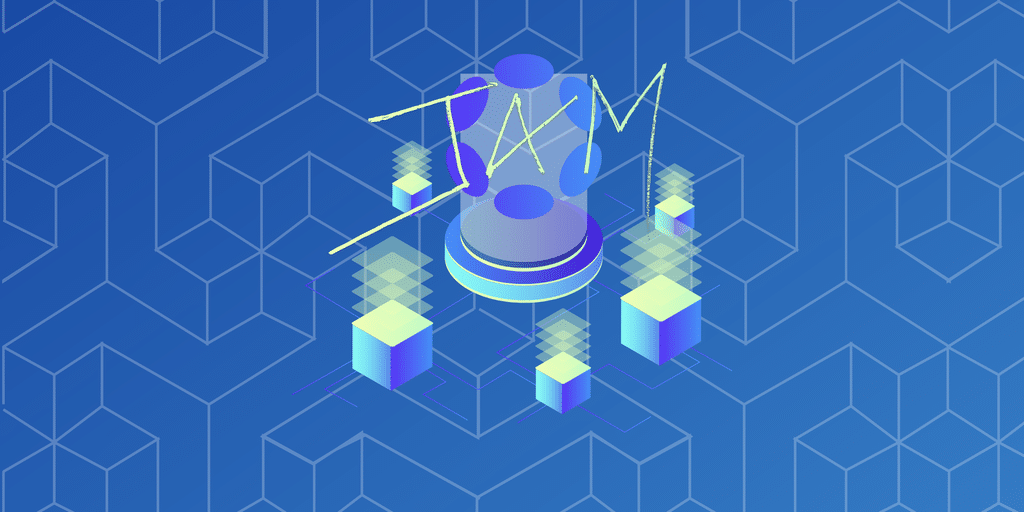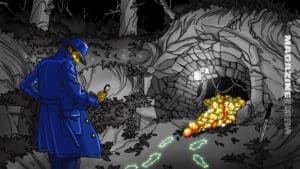What is JAM? Polkadot’s biggest update of all time is explained.
4 months ago Benito Santiago
Unveiled in April 2024, the Join Accumulate Machine (JAM) features its biggest update to date. Spotted Since blockchain In the year
The proposed technical principles and objectives of the JAM update are outlined in the JAM Gray Paper written by Polkadot creator Gavin Wood.
Polkadot relies on decentralized leadership to determine the future of the project, and the proposed amendment was confirmed after a unanimous vote from DOT shareholders in May 2024.
What is JAM?
JAM is an upgrade to Polkadot's multi-chain network, which aims to replace the relay chain with a “modular, minimal design”.
The Relay Chain is the main chain of the Polkadot network, coordinating the parachains that conduct side-by-side transactions on the network. Each system is used to verify transaction addresses and normalize data, increasing the security of chains on the Polkadot network.
According to Polkadot's founding organization, the Web3 Foundation, JAM enables Polkadot to run “generic “services”, smart contract logic.”
While deriving from Polkadot's existing relay chain, JAM will be inherently ‘licenseless', allowing anyone to build services on top of it.
This comes from a complex and investment-heavy system where developers bid for the auction with the help of their project's backers, backing their dot tokens for the auction.
Polkadot's evolution continues with JAM, a candidate design for future Polkadot relays.
8 years after Polkadot wrote the white paper, @gavoyork lays out his vision for the future of the network in a gray paper.
— Polkadot (@Polkadot) April 19, 2024
It's similar to how people build. EthereumDevelopers can build services and Smart contracts Without buying them first. These new services will interact with the rest of the Polkadot ecosystem and send signals and data to each other, just like how current parachains work.
Polkadot's auction system will be replaced by Agile Coretime, a more economically flexible model that allows Polkadot users to purchase Coretime, the computing resources provided by JAM, in bulk per month.
Once purchased, Coretime can be broken down into separate units and sold to the secondary market, improving the overall market's computing power efficiency. All of these Coretime transactions use DOT, which is native to the Polkadot ecosystem.
In a sense, JAM combines the parachain-centric functionality of the original Polkadot version and the smart contract-centric approach of the current Ethereum version. Gavin Wood describes JAM as the “opinionless version” of Polkadot because it doesn't try to push users towards one approach or another.
Wood thinks that the new approach proposed by JAM will help to solve some of the problems faced earlier by blockchain, when their communities grow in size, users and projects beyond a certain point.
What is running JAM?
A Jam supercomputer known as the Polkadot Virtual Machine (PVM) uses RISC-V. It is an open source and widely adopted processor architecture, used to develop custom processors for a variety of applications, and employed by companies including Google, Nvidia, and Alibaba. It replaces the WebAssembly-based framework currently used by Polkadot.
The mainframe is to be tested on a specially-built supercomputer called the Polkadot Palace in Lisbon, Portugal. The new supercomputer has 12,276 cores and 16 TB of RAM and can fully host the entire Gem network.
If JAM is successfully implemented, Wood predicts that JAM should be able to achieve data throughput of up to 852Mb/s—42 times that of the vanilla version of Polkadot—before entering asynchronous backup in May 2024.
The Gray Paper estimates that if JAM is fully operational, it could achieve a processing capacity of about 150 bbl of gas per second.
How will JAM change the Polkadot ecosystem?
In a May 2024 podcast interview, Polkadot founder Gavin Wood discussed how having the ability to build services directly on the relay chain would improve the accessibility of the Polkadot ecosystem.
There is currently a strict limit of 50 parachains that can be hosted on Relay Chain. Getting one of these limited spots means going through a bidding process and having financial backers, which makes the barriers to entry relatively high.
Like the current relay chain, the JAM chain itself does not have a function of its own. Functions such as administration, stacking, and management are instead built on top of these services, with JAM providing OS redundancy that enables integration and functionality.
JAM can be simply defined as a “distributed computer”, which can be used to perform any task.
Wood uses bees, leaves, and flowers as metaphors for how they work in the natural world to explain how Gem works. In nature, a flower is surrounded by flowers. These petals are like the cores of the physical nodes of the computers that run the blockchain.
In JAM, scrolls – services built on top of JAM – are like bees and move freely between the leaves. This is a departure from the original Polkadot or zk-rollup Ethereum version, where individual leaves (or cores) were mapped one-to-one to the supporting parachain.
In jam, these versatile flowers are “stateless”, and are adapted to different functions, depending on the need.
Every few seconds or so the flowers, which can be thought of as blocks, create a harmony between all their different flowers.
When does JAM start?
It can take at least 20 to 60 months before a production-ready version of Jam is ready for deployment, not including the many services planned to be built on top of it.
Unlike previous Polkadot updates, JAM will not be introduced in a progressive, iterative approach. The migration is done simultaneously and once done.
The actual transfer means nothing to those who hold or want to trade DOT tokens. As it stands, there will be no fiat currency or new altcoin Bitcoin cash After the Bitcoin hard fork in 2017, or when Ethereum Classic It appeared for the first time in 2016.
What will happen to the existing parachains?
JAM is not a so-called hard fork, even though it has changed significantly on the Polkadot network.
This means that the functionality of any parachains currently running on Polkadot will not be affected. Part of the JAM proposal includes guarantees around hard code compatibility.
But even if the existing parachains continue to operate as usual, they won't be the only game in town. Parachains will be just one of many products that could be launched by the JAM chain.
Polkadot says we will see more suitable use cases emerging for Parachain and others to build as a service.
The Web3 Foundation has assured users that parachains will remain “first-class citizens” even after the jam.
How can developers get involved?
The Web3 Foundation will encourage developers working on implementing the JAM protocol.
The Gem Performer Award offers up to 10 million DOT — roughly $70 million in current prices — to developers who can meet certain performance criteria.
The prize plans to reward teams that successfully work on different implementations, such as using alternative programming languages to Solidity, which most of the current parachains are built on. These languages include OCaml, Go and Zig.
The Web3 Foundation is still finalizing the application process, but if you are interested in applying for the award, you can go here to register early.
Daily Debrief Newspaper
Start every day with top news stories, plus original features, podcasts, videos and more.













